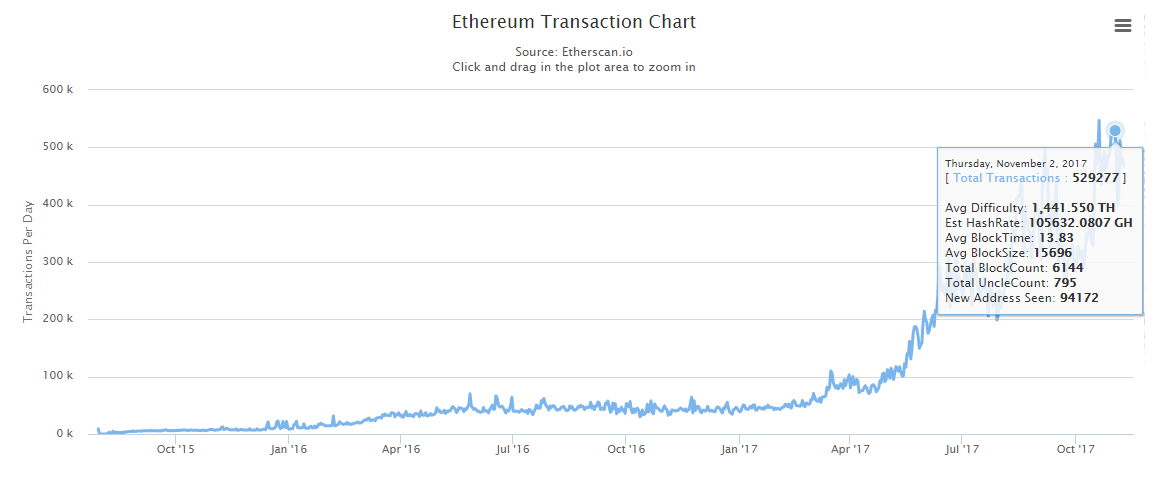The Ethereum network now processes twice the transactions than bitcoin on a daily basis, as it settles more than 520,000 transactions per day on average.
 Since the beginning of 2017, the Ethereum Foundation and the open-source development community of Ethereum have increasingly focused on developing innovative scaling solutions such as Plasma and sharding.
Since the beginning of 2017, the Ethereum Foundation and the open-source development community of Ethereum have increasingly focused on developing innovative scaling solutions such as Plasma and sharding.
Several hard forks including the latest Byzantium hard fork were focused on increasing the capacity of the Ethereum blockchain network, to further scale the protocol for decentralized applications, users, and businesses. For instance, the Byzantium hard fork eliminated the root of the transaction tree that is unnecessary for each transaction to hold, effectively reducing the size of Ethereum transactions and optimizing the Ethereum blockchain.
“Previously, each transaction’s receipt included the root of the transaction state tree. That is, the root of the Merkle tree immediately after that transaction was added to the tree. The state tree root, is one of the only dependencies one transaction has to other transactions in the block. By removing this dependency and adding several optional parameters, transactions can now be processed in parallel,” wrote Mohamed Abedelmalik, Executive Director of Columbia Blockchain Lab.
In the long-term, solutions like Plasma, which aim to deploy an interconnected network of blockchains wherein users are not required to verify every single point of data stored within the Ethereum blockchain network, will allow the Ethereum network to scale even more efficiently, handling larger daily transaction volumes and offering lower fees.
Scalability is particularly important for Ethereum, arguably more so than bitcoin, because its transactions essentially represent fees users pay to decentralized applications launched on top of the Ethereum protocol. For instance, if a user is to use a LinkedIn-like business- and employment-oriented social networking application on Ethereum, the user needs to deploy a smart contract to the Ethereum blockchain in order to create a profile.
To do so, since the deployment of smart contracts require transactions to be facilitated, gas or transaction fees are required to be sent by the user. If the transaction fee costs more than $1, it could become a problem for the user, especially if the application has millions of active users.
Given Ethereum’s prioritization of flexibility and scalability, Ethereum co-founder Vitalik Buterin and the rest of the Ethereum Foundation have been preparing to migrate from proof-of-work (PoW) consensus protocol to proof-of-stake (PoS), or at least a hybrid system between the two, to increase the capacity of Ethereum.
As of this writing, the initiatives of Ethereum developers and open-source projects are demonstrating some success, as the capacity of the Ethereum blockchain has been increasing at a steady rate and the daily transaction volume of Ethereum has risen rapidly over the past few months.
More importantly, Xapo President Ted Rogers recently stated that some of the biggest businesses in bitcoin that are struggling to deal with high fees are considering moving to Ethereum.
“My guess [is the] biggest [bitcoin] companies are packing up to move to Bitcoin Cash or Ethereum, and will take millions users and transactions with them. [Many] will still support bitcoin but [it is] not a focus for their future. Xapo [is] still bitcoin only and will implement SegWit but [I] wouldn’t waste your time pressuring the others,” explained Rogers.














